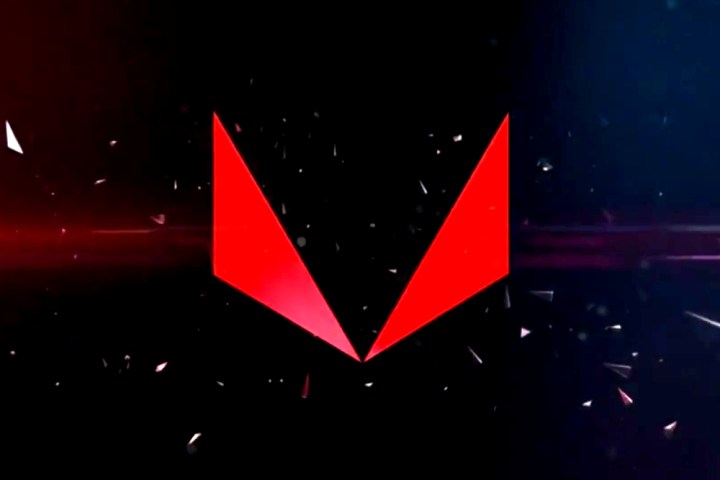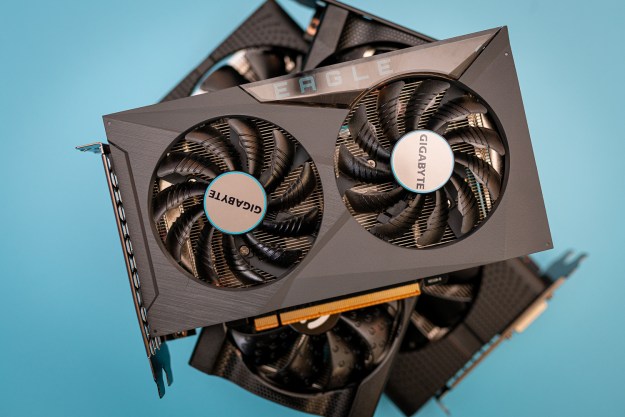
According to the listing, the benchmarked Vega chip has 64 Compute Units. In AMD’s Graphics Core Next design, the company groups 64 stream processors into one compute unit, thus the upcoming Vega chip will have 4,096 stream processors. For the uninitiated, stream processors don’t work like CPU cores — together they can only handle one function at a time. As an example, they can work in parallel to perform the same task but use different data sets to get more done.
That said, the more stream processors, the better. The benchmark also lists two maximum speeds of 1,000MHz and 1,200MHz, indicating a possible raw computing performance of 8.2 TFLOPS and 9.8 TFLOPS, respectively. By comparison, Nvidia’s GeForce GTX 1070 has a raw computing performance of 6.5 TFLOPS and the GTX 1080 has 8.9 TFLOPS of performance. That is short for teraflops by the way and refers to the ability to calculate 1 trillion floating point operations per second.
Based on the CompuBench numbers, AMD’s unannounced Radeon RX Vega GPU in its current state falls behind the Nvidia GeForce GTX Titan X in the Vertex Connection and Merging test. It’s actually seventh on the list, pushing 11.567 megapixels (1 megapixel = 1 million pixels) per second. By contrast, the card at the top of the list is Nvidia’s new GeForce GTX 1080 Ti pushing 15.545 megapixels per second. The Titan X only does 11.923 megapixels per second.
In the ocean surface simulation test, the GeForce GTX 1080 Ti card comes out on top again, but just barely. Nvidia’s new card manages 3,967.891 interactions per second followed by AMD’s Vega-based GPU with 3,782.357 interactions per second. The subsurface scattering test shows the Titan X on top with 9,848.97 mega samples per second, and the Vega-based GPU landing in sixth place with 6,805.232 mega samples per second.
For the hardcore readers, here are a few more numbers pulled from the CompuBench listing:
| AMD 687F:C1 | GTX 1080 Ti | |
| Catmull-Clark Subdivision Level 3: | 81.251 mTriangles/s | 245.95 mTriangles/s |
| Catmull-Clark Subdivision Level 5: | 239.511 mTriangles/s | 353.415 mTriangles/s |
| Subsurface Scattering multiple view: | 6,262.991 mSamples/s | 9,610.488 mSamples/s |
| TV-L1 Optical Flow: | 56.729 mPixels/s | 64.918 mPixels/s |
| Level Set Segmentation – 128: | 10,281.757 mVoxels/s | N/A |
| Level Set Segmentation – 256: | 10,844.834 mVoxels/s | N/A |
AMD’s Vega architecture will consist of a geometry pipeline, the compute engine, the pixel engine, a high-bandwidth cache controller, high-bandwidth cache, L2 cache, and three units of L1 cache. There will also be two paths leading out of the GPU, with one connecting to the CPU/Display/PCIe pathways, and one leading out to the storage/DRAM pathways. The cards are slated to hit the market in the second quarter of 2017, though they could arrive before the end of March.
Editors' Recommendations
- AMD might admit defeat, but it’s for the best
- AMD might crush Nvidia with its laptop GPUs — but it’s silent on the desktop front
- AMD is letting Nvidia win, and it needs to step it up before it’s too late
- Bad news: AMD may have launched RDNA 3 before it was quite ready
- AMD finally shares new RX 7900 XTX benchmarks, and it’s not all good news



